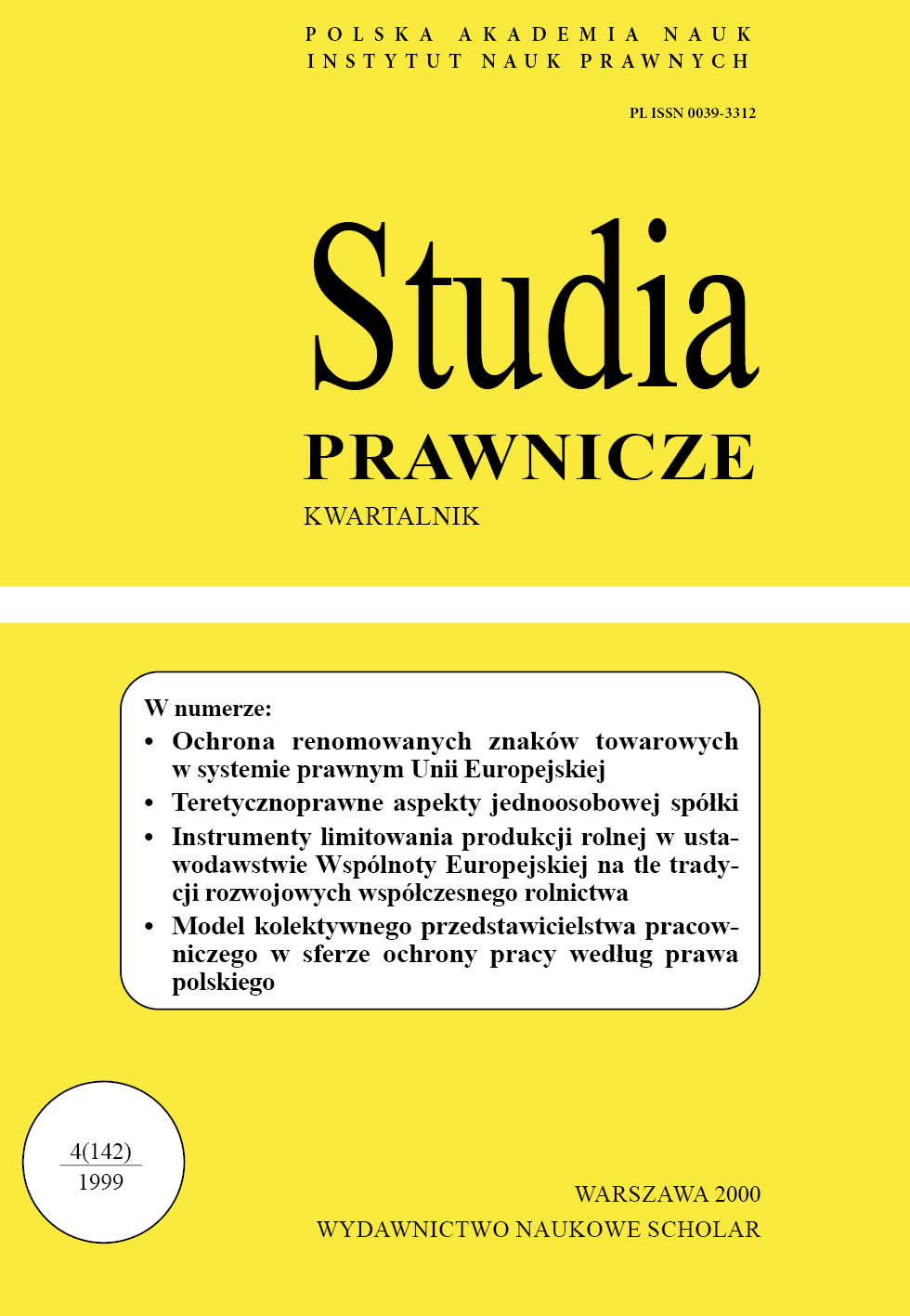Teoretycznoprawne aspekty jednoosobowej spółki. Cz. 1
Theoretical and legal aspects of a single-member company
Author(s): Barbara BajorSubject(s): Law, Constitution, Jurisprudence
Published by: Instytut Nauk Prawnych PAN
Keywords: sole shareholder company; theory of law; corporate law; law of the European Union
Summary/Abstract: With the 1988 amendment of Article 158 of the Polish Commercial Code, the legal possibility for a single person, natural or legal, to form a limited liability company was created in the Polish legal system. Prior to the above regulatory change, the possibility for one person to form a company was limited. It applied only to joint-stock companies whose sole founder could be the State Treasury or a local government association (now a local government body). Nowadays, with the legalisation of the single-member limited liability company and the adoption of the legal form of the joint-stock or limited liability company for state-owned enterprises in the process of their commercialisation and privatisation, the single-member company has acquired a special economic significance.The single-member company is not a new concept, although it is undoubtedly a new legal institution from the point of view of the legality of its operation and, above all, the permissibility of forming a one-man company ab initio. What is not disputed, however, is the fact that the legal form of the single-member company has been used in the practice of business life, despite the absence of explicit provisions allowing for its existence.Both foreign and Polish doctrine points to the widespread use of the company form by a single person as the legal form of a company, despite the lack of provisions allowing the formation of a company by a single person. Indeed, secondary single-member companies sensu stricto and single-member companies sensu largo were created. It is therefore noteworthy that the single-member company developed primarily praetern legem or in a camouflaged form even contra legem. Undoubtedly, the single-member company is a common law institution, shaped by the practice of economic life as part of the search for a legal form for an individual enterprise that would guarantee the individual entrepreneur the privilege of limited liability. Practically, however, the legalisation of the possibility of single-member limited liability company formation as a result of a process that had been ongoing since the 1980s represented, in most countries, a recognition of the status quo – an acceptance of secondary single-member companies already in operation while legalising single-member companies formed ab initio.In doing so, it should be noted that the process of legalising the single-member company primarily with limited liability, which began in the 1980s, has spread to all countries in the European Union. This legal state of affairs was significantly influenced by the EEC Council's adoption of the Twelfth Company Law Directive in 1989, obliging Member States to make the necessary legislative changes to legalise the single-member limited company. One of the factors that contributed to the enactment of this directive was the desire to remove the discrepancies that existed in the national laws of the Member States following the legalisation of the single-member company in some of the countries.The legalisation of the possibility for a single person to set up a company, admittedly to an almost unlimited extent so far for a limited liability company and to a limited extent for a joint stock company, was therefore a response to the needs of economic life. From the structural point of view, on the other hand, it was only possible in relation to certain legal forms of companies. The existence and operation of a company with a single member is only possible in the case of companies with a separate legal entity characterised by the principle of variability of composition, i.e. capital companies.
Journal: Studia Prawnicze
- Issue Year: 142/1999
- Issue No: 4
- Page Range: 49-71
- Page Count: 23
- Language: Polish

